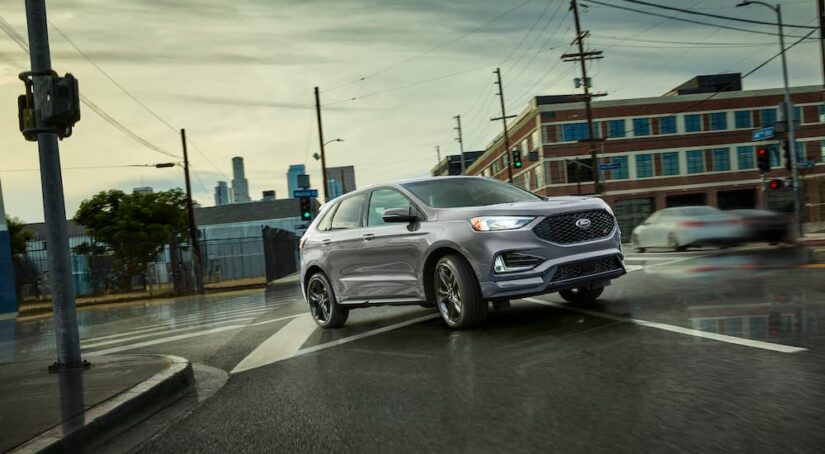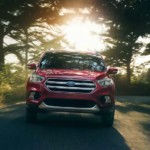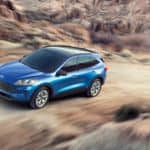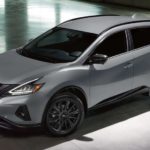When you’re on the hunt for a new vehicle, the decision-making process can become arduous. There are so many factors involved, and some are less tangible than others. Personal taste plays a part in choosing a dealership, as does comfort. If you already know your local Ford Edge dealer, for example, you’re more likely to go back to them over someone else. Plus, there are local elements. Do you want to fit in and go with a ride that’s popular in town, or do you want to stand out with something unique? When comparing cars, you need to make sure you’re not relying on someone else’s criteria. Identifying what you need is far more important than simply aligning with what everyone else thinks. Your car will be part of your life—only you can make the right choice.
Still, it is worth considering what options there are so you’re fully informed. As for the Ford Edge, you may be curious how it compares with the Nissan Rogue, a crossover SUV that—at first glance—appears similar to the Edge. As someone who has been in both, I can tell you that they are both excellent vehicles that will get you wherever you need to go; I doubt either would disappoint you. Which one comes out ahead may come down to some of your aesthetic preferences, but there are concrete differences in their designs you’ll want to know about. Let’s dive into both and determine which will be the best bet for your next purchase. With luck, it’ll take a little pressure off and make your purchasing experience rewarding instead of frustrating.
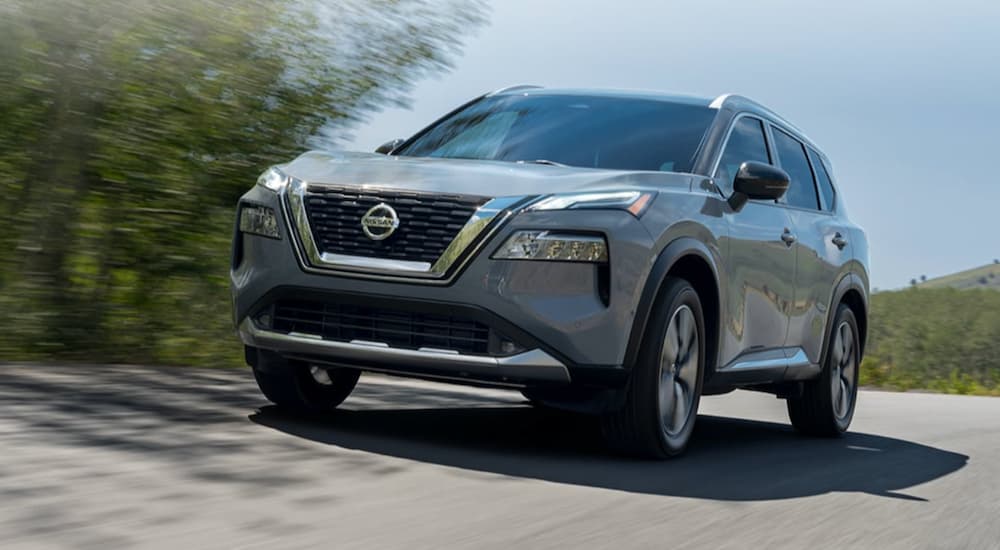
A Brief History of the Ford Edge and Nissan Rogue
The Ford Edge, an SUV crossover, has been on the roads since 2006. It was one of the vehicles that helped rocket SUV crossovers into popularity. Americans have since been purchasing crossovers with wild abandon. It’s hard to go anywhere without seeing one. The Ford Edge has itself been a huge seller for Ford, consistently topping the charts at dealerships across the nation. While Ford has plenty of muscular trucks to offer, the Edge appeals more to families as it affords a sense of command without the bulkiness of larger trucks.
Why is it less bulky? SUV crossovers have a different build from SUVs; crossovers’ underlying structures are built more like a sedan than a truck while still offering the cargo space of SUVs. It’s not a surprise the market responded so well to the Edge, and crossover SUVs at large, with dimensions such as these. Not everyone wants a big vehicle but neither do they want to be stuck packing everything into a tight trunk.
The Nissan Rogue premiered just a year after the Edge, rolling out in 2007. Similar to the Edge, the Rogue helped pave the way for the crossover craze that took the nation by storm. The Rogue offered a similar build and threaded the needle between a sedan and a standard SUV. The Rogue helped put Nissan on the map as it became the manufacturer’s highest-selling vehicle throughout the 2010s.
It’s easy to see why so many people believe a coin toss can help you decide which to buy. On closer inspection, however, there are some key ways these two crossovers diverge.
How the Edge and Rogue Differ
While both crossovers have their own exterior designs, there may not appear to be radical differences outside of logos and grille sculpture; this makes sense since they are appealing largely to the same customer base. None of the design differences make one preferable to the other, at least from my view. A decision based on exteriors merely comes down to personal preference: the Rogue has a sharper, intimidating front, while the Edge’s more rounded front makes it welcoming. Both are similar sizes, but it’s worth noting the Edge offers a few cubic feet more of cargo space; depending on how much you plan to pack in, this could be a deciding factor.
Under the hood is quite a different story. Where we start to see how these crossovers truly differ is in their driving experiences.
The Rogue may stand out at first due to its excellent mileage, and it is very impressive, but one reason the Edge does not have the same mileage is it features a much heartier engine that promises improved performance. Yes, the Edge’s price at the pump will be slightly higher, but the engine provides 250 hp compared to the Rogue’s 201 hp. Why the difference? It comes down to the engine specifics. The Rogue has a turbocharged and intercooled DOHC 12-valve variable-compression inline-three engine. It’s not a bad engine by any means, but it does not match the Edge’s turbocharged and intercooled DOHC 16-valve inline-four. The numbers tell the story here, and the Edge—and I swear there is no pun intended—edges ahead of the Rogue in terms of power and performance.
If one does not plan to travel too far from home, then the different engines won’t matter. But for anyone who foresees taking some lengthy trips or has a highway commute, or if they want the comfort of managing a little more challenging terrain, the Edge will give you a better sense of security.
The engine the Edge boasts grants it better speed, able to go zero to 60 in just under seven seconds, whereas the Rogue takes almost eight. The difference may not appear huge, but it can be impactful enough if you are making a quick turn or entering the freeway.
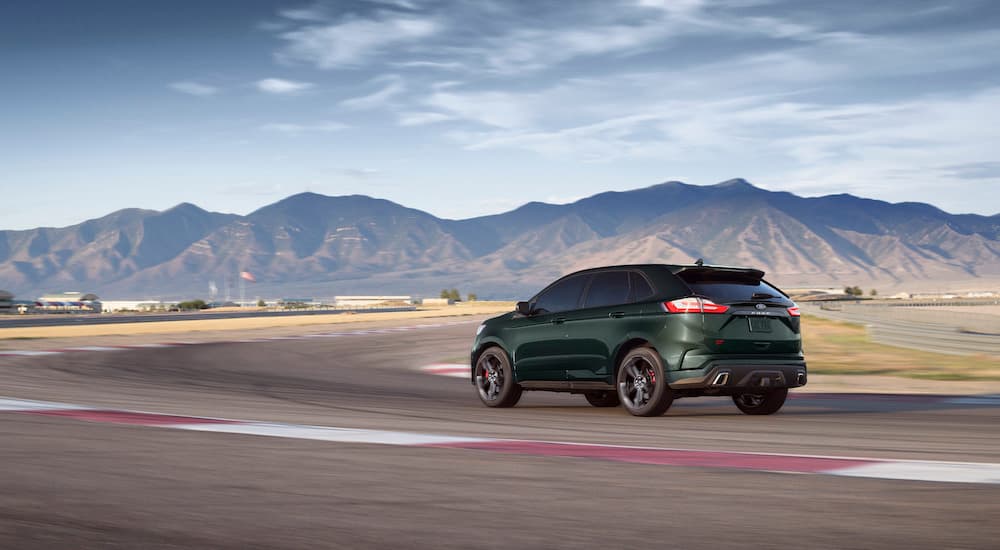
Deciding Factors
Price will no doubt pay a part. The Rogue is cheaper than the Edge, and only you can decide if the engine payoffs are worth that price deferential. For some, the answer will be the cheaper route. After all, the Rogue is a solid crossover—one that will serve a family well for local driving. If you’re planning longer journeys, however, you will want to pause and consider the higher price since the Edge gives you increased security so that you can go wherever you want.
The Edge is a heavier vehicle, which you might prefer if you like a solid amount of car around you for a stronger sense of safety. Or, you may prefer the lighter weight the Rogue comes with, as you like the feel of a nimble ride.
Then, of course, there are the trim choices. Both crossovers come with their own trims, some of which look rather dapper. The Edge’s Titanium trim gives it a look of dark, firm steel, convincing onlookers that little could damage it. The Rogue’s Midnight Edition has a pitch-black exterior, making it camouflage itself at night. Personally, I’d be happy with either of those trims in terms of aesthetics, although I give a slight edge—again, no pun intended—to the Titanium’s formidable look.
The Verdict
Both of these crossovers will treat you well. For those who plan to spend a lot of time on the road, however, the engine in the Edge will probably make that one a better choice so long as you are comfortable with the price. Anyone traveling will appreciate that it can handle a variety of landscapes, which reduces stress when traveling. Greater comfort on the road is of incalculable value, particularly for those who spend much of their year on the go.
